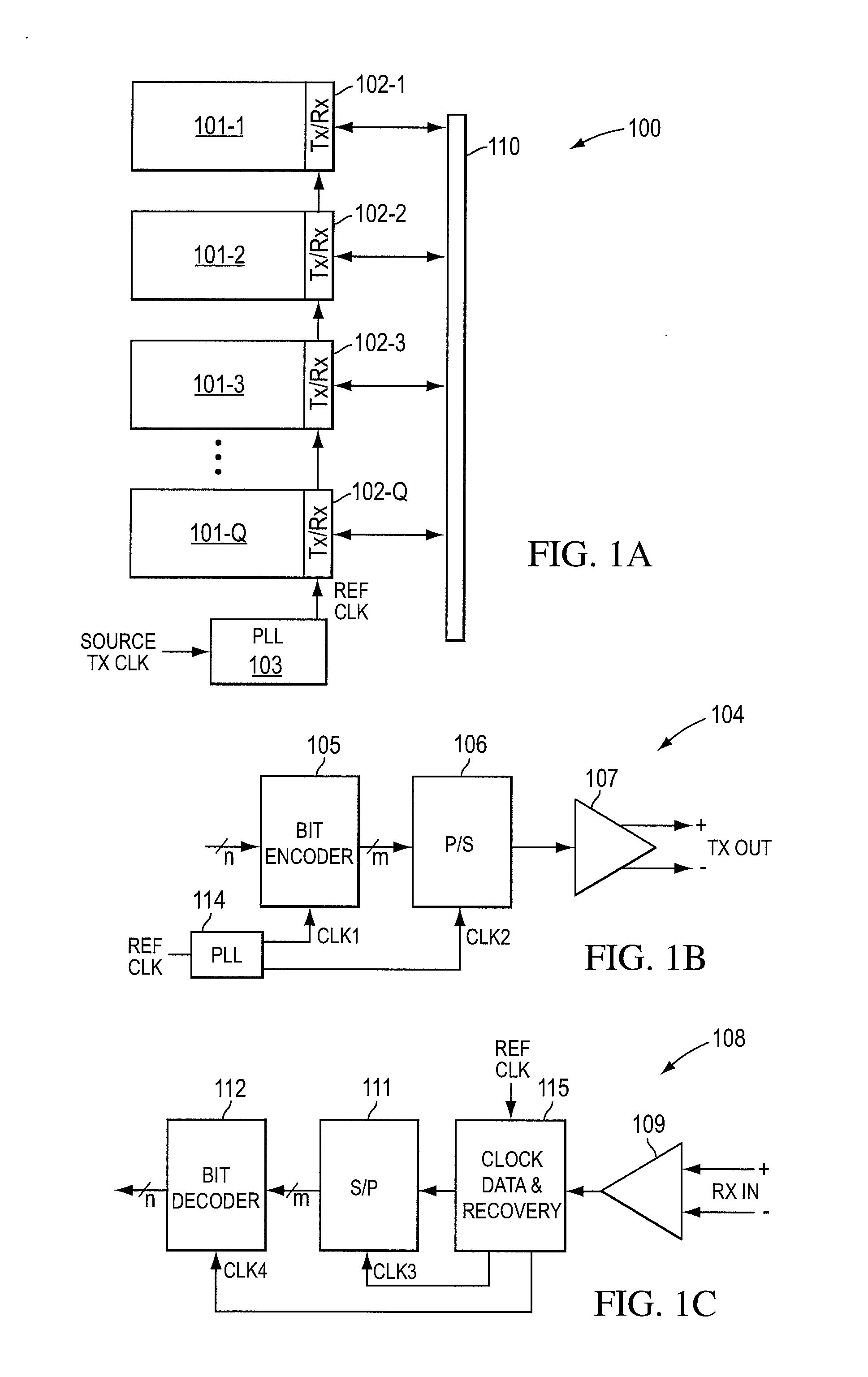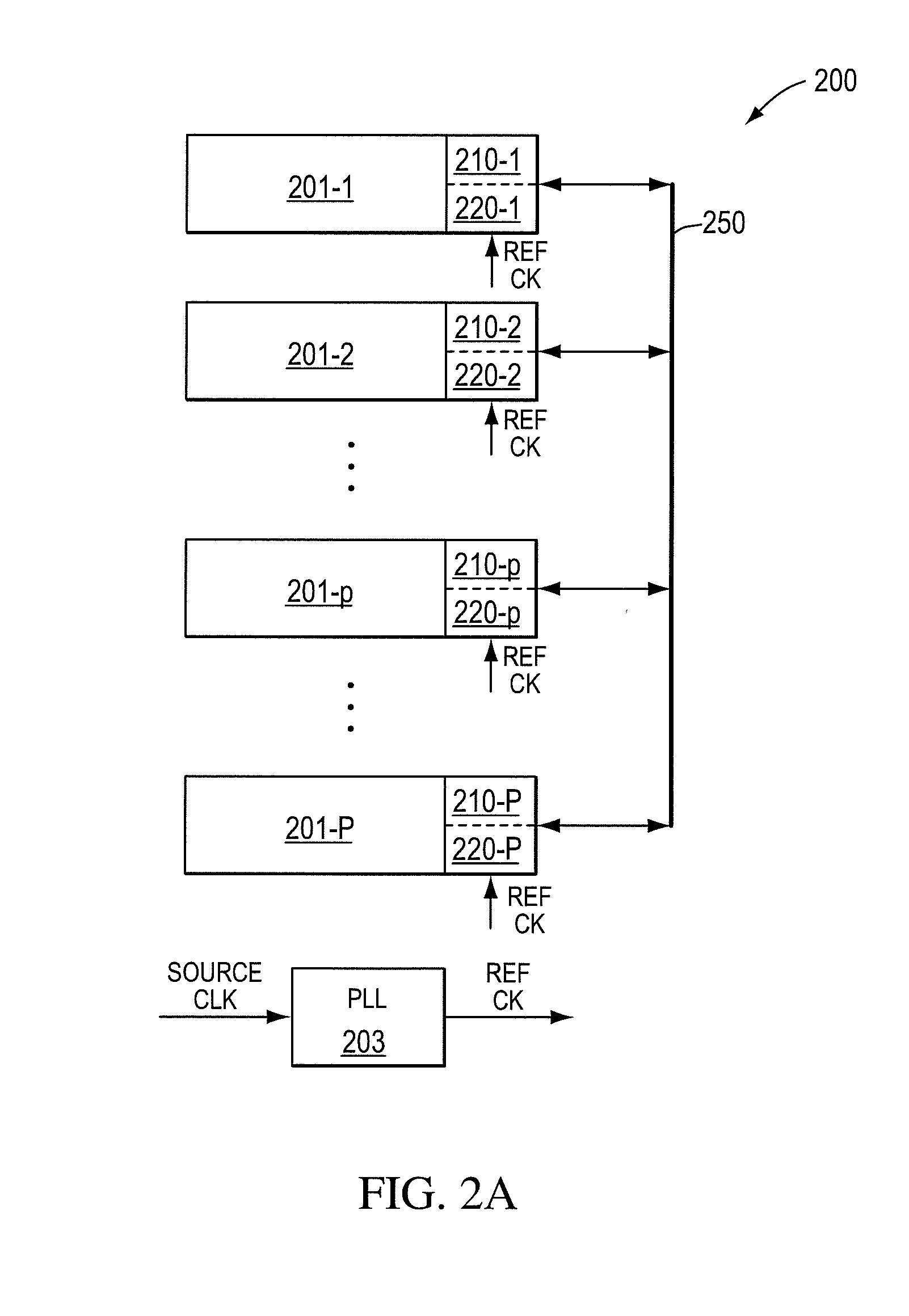Multi-channel communications transceiver
a transceiver and multi-channel technology, applied in the field of high-speed data communication, can solve the problems of inefficient bandwidth, more isi suffered by transmitted data, and difficulty in increasing data rates across backplane buses b>, and achieve the effect of increasing intersymbol interference and high data transmission rates
- Summary
- Abstract
- Description
- Claims
- Application Information
AI Technical Summary
Benefits of technology
Problems solved by technology
Method used
Image
Examples
Embodiment Construction
[0055]FIG. 2A shows a block diagram of a transmission system 200 according to the present invention. System 200 includes any number of components 201-1 through 201-P, with component 201-p representing an arbitrary one of components 201-1 through 201-P, coupled through a transmission medium 250. Transmission medium 250 may couple component 201-p to all of the components 201-1 through 201-P or may couple component 201-p to selected ones of components 201-1 through 201-P. In some embodiments, components 201-1 through 201-P are coupled through FR4 copper traces.
[0056]System 200 can represent any backplane system, any chassis-to-chassis digital communication system, or any chip-to-chip interconnect with components 201-1 through 201-P representing individual cards, cabinets, or chips, respectively.
[0057]Transmission channel 250 can represent any transmission channel, including optical channels, wireless channels, or metallic conductor channels such as copper wire or FR4 copper traces. Typ...
PUM
 Login to View More
Login to View More Abstract
Description
Claims
Application Information
 Login to View More
Login to View More - R&D
- Intellectual Property
- Life Sciences
- Materials
- Tech Scout
- Unparalleled Data Quality
- Higher Quality Content
- 60% Fewer Hallucinations
Browse by: Latest US Patents, China's latest patents, Technical Efficacy Thesaurus, Application Domain, Technology Topic, Popular Technical Reports.
© 2025 PatSnap. All rights reserved.Legal|Privacy policy|Modern Slavery Act Transparency Statement|Sitemap|About US| Contact US: help@patsnap.com



